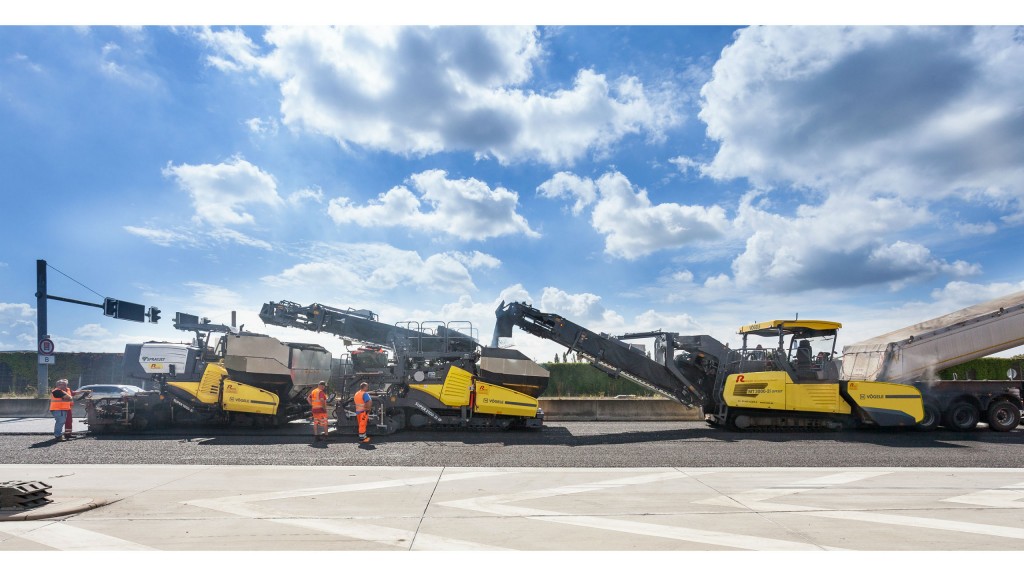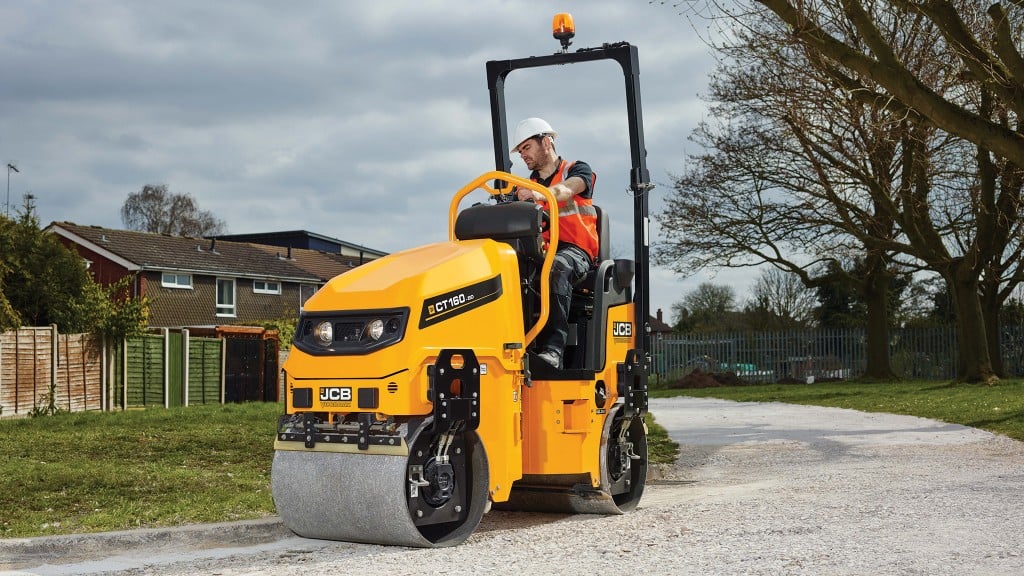
For road rehabilitation, the conventional process is to mill off the surface and replace the asphalt pavement. There are two other methods that are gaining usage worldwide.
One is paving thin overlay on spray seal, and the other is “hot on hot” paving of compact asphalt pavements. These two methods were made possible by Vogele and their specially developed machine technologies, the company says.
Vogele has now taken this one step further. They have combined these two innovations into one system. It was developed for a German contractor, Rask Brandenburg GmbH.
The machines behind these methods of road rehabilitation are the SUPER 1800-3i SprayJet paver and the Vogele InLine Pave trains.
The InLine consists of a Vogele MT 3000-2i Offset PowerFeeder, a SUPER 2100-3i IP for placing binder course and another Vogele paver for the surface course.
In the InLine Pave process, the binder and surface courses are paved “hot on hot” in a single pass. In other words, the two Vogele pavers work “in line”, with just a few metres between them, so that one lane can remain open to traffic. A Vogele MT 3000-2i Offset PowerFeeder, with pivoting conveyor and automatic distance control, ensures a continuous supply of material. The paver operators can therefore concentrate entirely on paving.
The SUPER 2100-3i IP is the central component of the InLine Pave process for placing binder course. The redesigned transfer module has a heated conveyor that has been extended by one metre. It transfers the mix for the surface course to the downstream paver. The transfer module can easily be removed.
Equipped with an AB 600 TP2 Plus Extending Screed, the SUPER 2100-3i IP places such a highly compacted binder course that the surface course paver can travel over it without prior rolling. This is made possible by another core innovation: high compaction technology with Vogele’s unique pulsed-flow hydraulics. In this step, the asphalt is pre-compacted during paving by a tamper and two pressure bars.
This process is both economical and eco-friendly. The layer thickness can be reduced in “hot on hot” paving, thus lowering consumption of the costly surface course mix.
Quality is another aspect as the Vogele InLine Pave produces a perfect bond between the binder and surface courses, making the new pavement very durable.
The InLine Pave train also has a modular design to maximize economic efficiency. It includes only slightly modified, standard machines, all of which can be used individually for other paving jobs.
Vogele adapted the technology on the SUPER 1800-3i SprayJet in such a way that the machine can take over the job of paving the surface course in the InLine Pave train. The machine operates in the conventional manner, rather than in spray mode, as the “hot on hot” method achieves a perfect bond between layers and strong interlocking without the need for spraying bitumen emulsion. The modifications made to the SUPER 1800-3i SprayJet include the incorporation of a water spray system and wider crawler tracks. For spray applications, the paver is equipped with a removable SprayJet module, which enables it to simultaneously pave and accurately spray the emulsion.
After the surface course is paved, rollers are used as usual to achieve final compaction.
Company info
6030 Dana Way
Antioch, TN
US, 37013
Website:
wirtgen-group.com/america/en-us/products/voegele
Phone number:
(615) 501-0600



